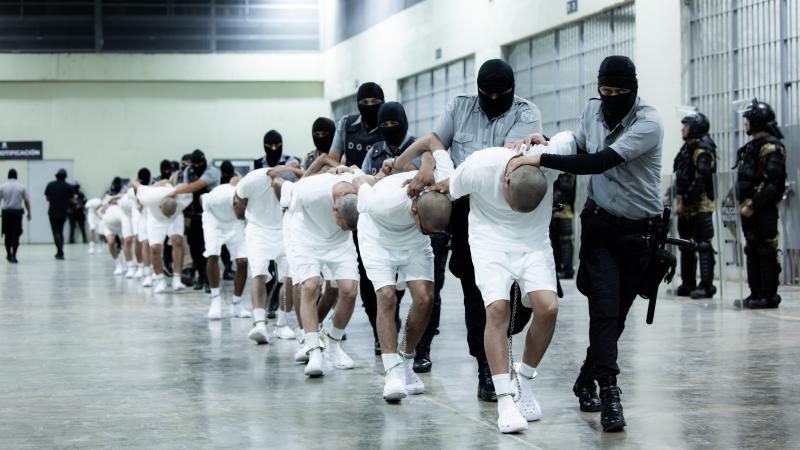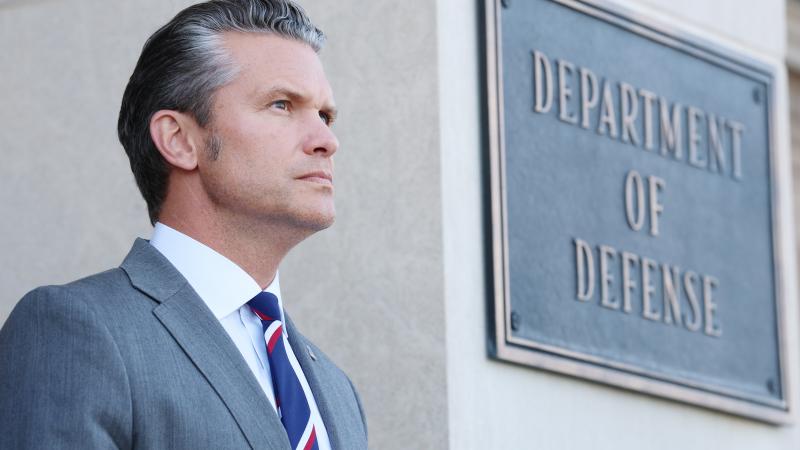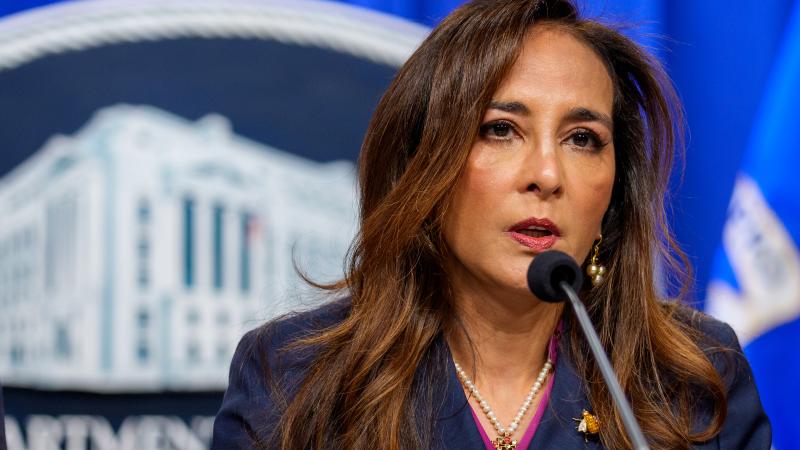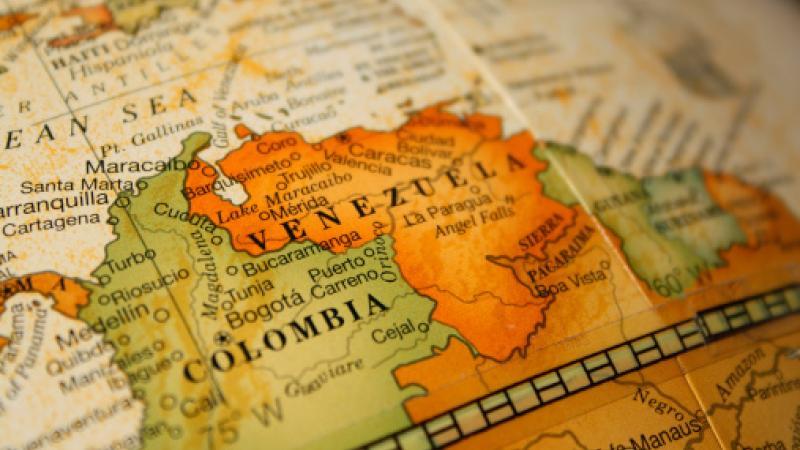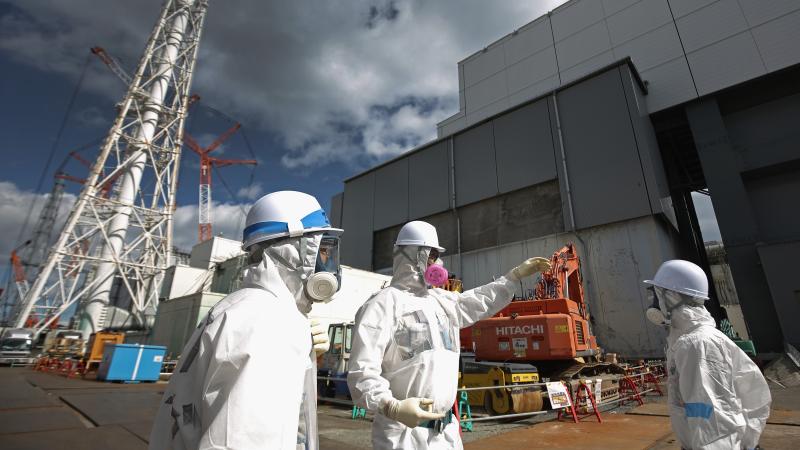Trump returns to office as U.S. adversaries Russia and China more aligned than ever
To achieve long term success former officials say, President-elect Donald Trump will have to find a way to drive a wedge between the two greatest powers in the alignment: China and Russia.
When President-elect Donald Trump takes office in January, he will face a more closely aligned “axis” of adversaries pressuring the United States across the globe.
China, Russia, Iran and North Korea have been driven closer together the last four years, whether by poor Biden administration policy or economic necessity.
Trump’s confidantes say that this grouping of countries presents a new problem for the United States, which used to be able to deal with each separately.
To achieve long term success, Trump will have to find a way to drive a wedge between the two greatest powers in the alignment: China and Russia, experts told Just the News.
They say the first steps are ending the war in Ukraine and exploiting the economic weaknesses of Beijing, the bloc’s clear leader.
Victoria Coates, former Deputy National Security Advisor for Trump and Vice President of the Kathryn and Shelby Cullom Davis Institute for National Security and Foreign Policy at the Heritage Foundation, said China is the main culprit “directing” the axis, due to the others’ economic dependence on the Asian power.
“They are all now economically dependent on China. I mean, China is directing their actions. And as I just said, all sorts of bad things are starting to flow around the globe,” Coates told the Just the News, No Noise TV show.
Coates explained China is at the forefront of facilitating aggression by Iran, Russia, and North Korea around the world by its investments and economic leverage.
For example, in 2021 Iran signed a $400 billion 25-year investment deal with China, which Coates said paved the way for the Islamic regime to support its proxies causing conflicts across the Middle East.
“This is what's fattening up the Iranian mullahs, making them feel like they can attack Israel with impunity,” the former national security official explained.
She also cited Russia and China’s “no limits” partnership, which Presidents Xi Jinping and Vladimir Putin agreed to on the eve of the 2022 Beijing Olympics as a key pillar of support fueling Russia’s attack on Ukraine.
“This is a new problem,” Coates explained. “We could treat these problem sets discreetly during the first term. In the second term, the Trump team is going to need to realize they're dealing with a different monster.”
Coates said unwinding this powerful alignment cannot happen in one fell swoop, but will rather require the United States to assert its advantages over China and the other block members to “make their lives miserable in all sorts of ways, all day, every day, to continue to weaken them.”
“I might say this is going to be a death of 1000 cuts, because China has some very systemic nationals or economic rather, just weaknesses that can be exploited by the United States, and we have enormous strengths that they don't have, and particularly in terms of natural resources,” Coates said.
Indeed, Trump frequently cited plans to restore U.S. energy dominance on the campaign trail, invoking his famous phrase “drill, baby, drill.” Coates said this strategy can extend to other fields, including critical minerals and manufacturing.
Trump has considered multiple options during the campaign to undercut Chinese leverage and damage its economy.
For example, he has proposed a 60% flat tariff on all Chinese imports to the United States. Trump has also proposed revoking China’s Most Favored Nation trade status, which under the World Trade Organization agreements, requires countries to offer the same terms to all trading partners.
Former Chief of Staff to Trump’s National Security Council Fred Fleitz said the axis represents one of the chief threats to both American and global security precisely because of the dangerous cooperation between Moscow and Beijing.
The first step in breaking the axis apart, he says, is working to end the war in Ukraine, which has driven Russia to seek weapons and financial and military support from Iran, China, and North Korea, cementing the countries together and has promoting economic dependence.
“This axis, which Russia and China have built during the Biden administration, which also includes Iran and North Korea, ending the war in Ukraine, will be the first step” breaking the axis apart, Fleitz told the John Solomon Reports podcast.
“And if the war in Ukraine has ended, Russia is not going to have need for weapons from Iran and from North Korea. If we can somehow find a way to normalize relations between Russia and Europe, I think the long term goal, probably after Putin leaves the scene, is to have Russia reinstituted as a full fledged member of…of Europe,” he said.
“Russia is a European power. It's not an Asian power, but the incompetence of this administration and its isolation of Russia is making it into an Asian power…where it is a junior partner to China. Long term, this is not in Russia's interest, and I think we have to work on that, that theme,” Fleitz said.
Indeed, Trump has made splitting Russia from China a central component of his foreign policy proposals on the campaign trail.
"The one thing you never want to happen is you never want Russia and China uniting," Trump said in an interview with Tucker Carlson. “I'm going to have to un-unite them, and I think I can do that, too. I have to un-unite them.”
This task will be difficult considering Russia’s new economic dependence on China and Putin’s long-held interest of undermining the Western-led international order.
In the wake of Russia’s invasion of Ukraine, trade between the two countries skyrocketed to $240 billion in large part due to U.S. sanctions on Moscow.
Russia and China’s recent declaration of a "no limits" partnership is also unambiguous about their joint promise to stand against encroachment by NATO and threats to “core interests, state sovereignty and territorial integrity.” They also promised to “oppose interference by external forces in their internal affairs,” a clear warning to the United States.
Yet, there remain tensions between Moscow and Beijing that will be available for the new Trump administration to exploit.
Recently, China has been making inroads with the countries of Central Asia, which lie within the boundaries of the old Soviet Union and which Russia considers to be within its sphere of influence.
As Russia’s finances and attention became increasingly consumed by its war in Ukraine, China has pursued trade deals and increased influence in the region at Russia’s expense. According to data from the Chinese customs agency, trade between Beijing and the Central Asians states grew to $89.4 billion in 2023, a 27% increase.
Until the war with Ukraine ends, experts say, Russia will continue avoid antagonizing Beijing in order to prioritize aid and indirect support its southern neighbor.
"The importance of Chinese aid and indirect support for Ukraine takes precedence for Moscow and will shape its approach toward Beijing as long as the confrontation with the West continues,” Emil Avdaliani, an international relations professor from Tbilisi, Georgia, wrote in February.
Trump has promised to end the Russia-Ukraine war “in a day” but has refused to share his plans publicly, citing the importance of keeping diplomatic proposals secret. It remains to be seen how successful early negotiations on ending the war could be.
After Trump won resounding victory in Tuesday’s presidential election, Russian President Putin congratulated the former president and promised to hear out any peace proposals.
"What was said about the desire to restore relations with Russia, to bring about the end of the Ukrainian crisis, in my opinion this deserves attention at least," Putin said.
The Facts Inside Our Reporter's Notebook
Links
- $400 billion 25-year investment deal
- âno limitsâ partnership
- 60% flat tariff
- proposed revoking Chinaâs Most Favored Nation
- skyrocketed to $240 billion
- recent declaration of a "no limits" partnership
- pursued trade deals and increased influence
- $89.4 billion in 2023
- wrote in February
- promised to hear out

